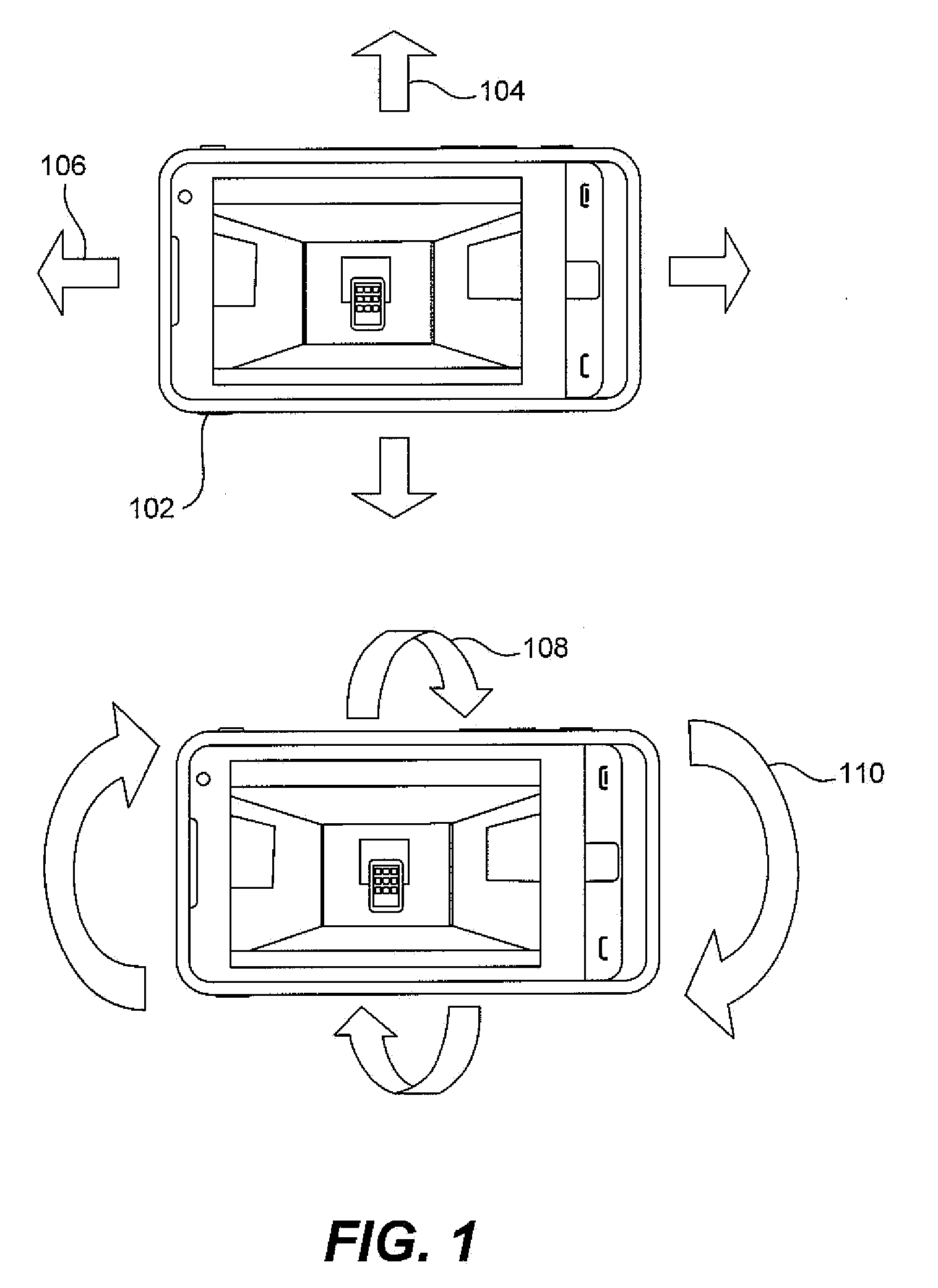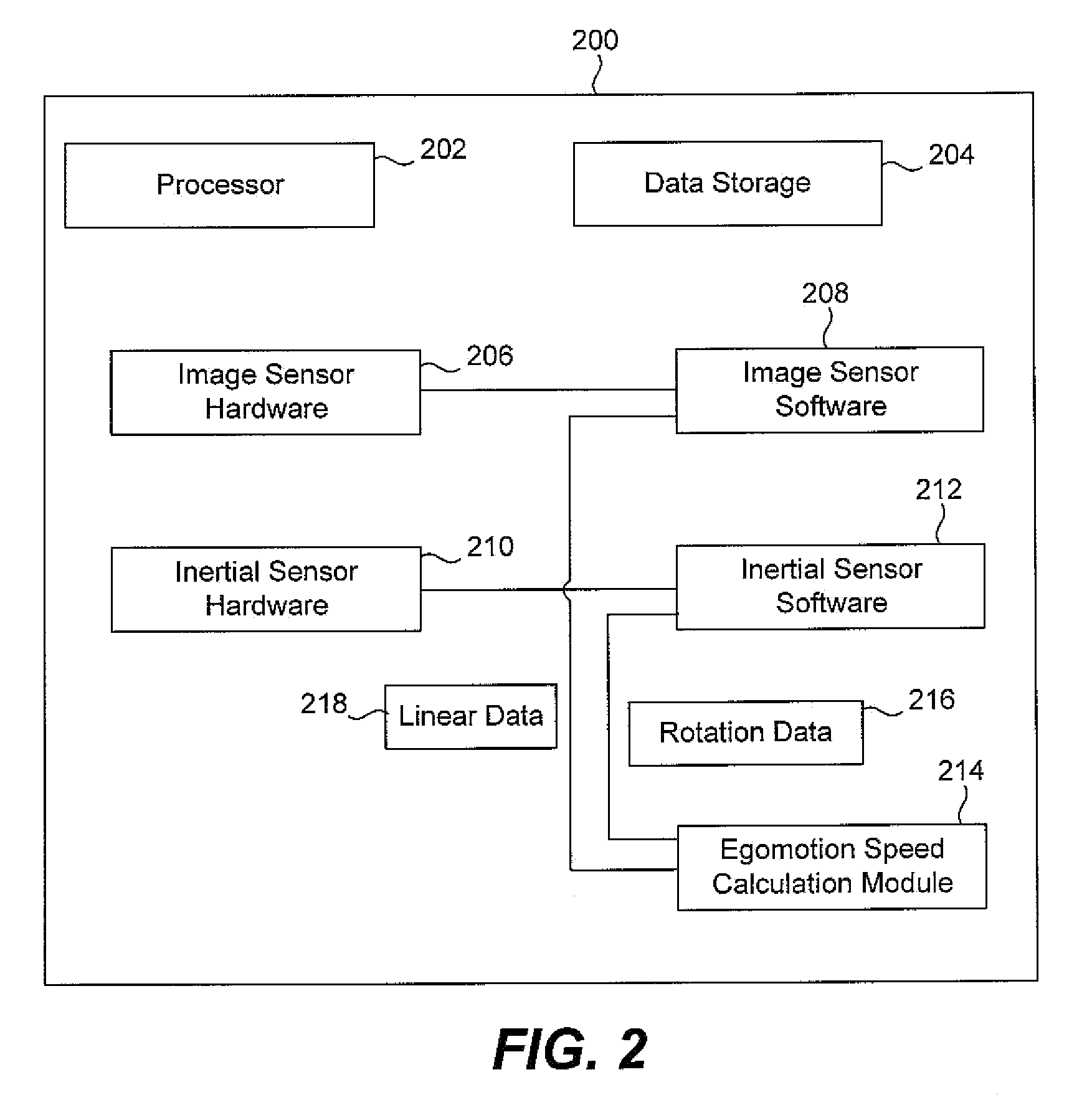Detecting ego-motion on a mobile device displaying three-dimensional content
a three-dimensional content and mobile device technology, applied in the human field, can solve the problems of limited display size, mobile devices that do not provide an immersive user experience with 3d content, and so on, and achieve the effect of improving the performance of existing applications
- Summary
- Abstract
- Description
- Claims
- Application Information
AI Technical Summary
Benefits of technology
Problems solved by technology
Method used
Image
Examples
Embodiment Construction
[0031]Methods and systems for measuring ego-motion speed of a mobile device are described in the various figures, where the measured speed, which indicates rotational and / or linear speed, is used to adjust a virtual camera for viewing 3-D content on the device. In one embodiment, a method to disambiguate shifting motion from and rotational motion without requiring more sensors than already in use on current mobile devices is described. In this manner, the various embodiments may be implemented using a software upgrade, which can be added easily to mobile devices, e.g., using application stores. The methods allow a more accurate ego-motion speed measurement than measurements based on inertial sensors alone.
[0032]In some embodiments, a user is able to view and navigate through 3D content displayed on a mobile device, such as a 3D scene in a virtual world or a 3D map from surround photos, without the use of a joystick or any type of additional controller. By simply holding the device a...
PUM
 Login to View More
Login to View More Abstract
Description
Claims
Application Information
 Login to View More
Login to View More - R&D
- Intellectual Property
- Life Sciences
- Materials
- Tech Scout
- Unparalleled Data Quality
- Higher Quality Content
- 60% Fewer Hallucinations
Browse by: Latest US Patents, China's latest patents, Technical Efficacy Thesaurus, Application Domain, Technology Topic, Popular Technical Reports.
© 2025 PatSnap. All rights reserved.Legal|Privacy policy|Modern Slavery Act Transparency Statement|Sitemap|About US| Contact US: help@patsnap.com



